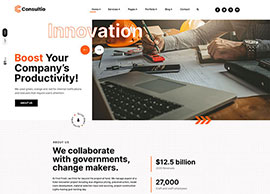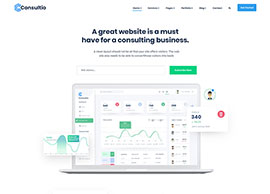When you hear about mail in the media, you will be told desolate stories about how it is becoming a forgotten system, with huge volume declines, becoming obsolete by the online replacement technologies. In actual practices, this is far from the truth. Mail volumes are declining, but not at the rate one would be led to believe. We are changing where and how mail is processed, but it is still a vibrant industry and service that will be around for years to come.
The objective of this article is to show you what is actually happening around mail, focusing on how it is processed in organizations throughout the United States. This will deal with the class makeup, what is being sent, how it is being mailed, and what you can expect for the future.
USPS Mail Volumes

To simplify the discussion around mail, we will talk about the two dominant classes that make up approximately 92% of all pieces: First Class Mail® and Marketing Mail.
First Class Mail® – This is the most common service and what everyone focuses on when discussing mail volume declines. There are two main ways this is processed:
- Non-Presort – Items deposited into the standard postal stream directly by the client. This also includes personal mail sent from home.
- Presort – Items processed in groups of 500 or more, following specific automation processes for postal discounts. This is either done by having software and staff in-house, or more commonly by hiring third-party outsource mail preparation services or presort/commingle companies that will pick-up your mail and combine with other clients to get the lowest postage rates.
When you look at mail volume declines, the biggest is with the Non-Presort segment that is going down at 7-8% per year vs. the presort segment that is only at 2%. Also, when you look at the size of the category, 73% is run through presort, making the total reduction in First Class Mail® lower at only 3-4%.
We do not see a major change in the current decline rates unless there are regulations that allow organizations to automatically sign clients up for electronic presentment without their approval.
Marketing Mail – This is for promotional content, and like Presort mail, it must be processed in larger groups with specific automation levels for postal discounts. Items must be non-personal in content and cannot have statement level details. The rates are less, and it is perfect for advertising content or informational material. The volume declines have been very small in this segment at 1-3% per year, except for major economic corrections. During COVID-19, volumes went down 15%, and we saw similar declines in the recessions in 2001 and 2007.
We do not expect Marketing Mail volumes to decline in a more drastic way because the response rates from direct mail have held up over the years. It is one of the few ways to ensure that your message is seen by the consumer who may block other forms of media.
Mailing Technology Today
Mail is processed in one of the following methods:
- Postage Meter – We estimate that there are approximately 700,000 postage meters in the US based on USPS market share data that was available in the past and extrapolating average decline rates. Meter populations have been declining by around 5% per year. 50-70% of these devices will need to be replaced by June 30, 2024 to meet USPS technology rules. Many of the devices impacted are in the low volume segment and the industry may see higher short term cancellation rates.
- Online Postage – This is processing mail through the web to print stamps or shipping labels on demand. This segment has an estimated 800,000 paid subscriptions and has been growing due to its simplicity and lower cost.
- Purchase Stamps directly from the USPS – According to NAICS there are 18,232,567 businesses and we estimate there are 25,000,000 plus locations. 94% of these locations will purchase postage directly from the USPS vs having mailing technology in their offices.
How Mail will be Processed in the Future
To look at future mail needs, it is important to break down volumes to segments.
- Larger mail volumes will continue to be outsourced to third party service providers due to the complexity and their ability to get better postal rates. Fewer organizations will have in-house expertise and will want to outsource to providers that can better support their needs. In large companies, high volume mail will be consolidated to fewer processing locations.
- Day to Day Mail – After you strip away the large volume mail streams, you are left with day-to-day convenience mail that needs to be processed.
The biggest opportunity for expansion is the way that Day to Day Mail is handled. Although mail volumes are going down, 94% of the business locations in the US have no access to mail technology. This also does not count the millions of people that work from home. The reason for this lack of access is the Postage Meter industry charges $30-1300 per month per device and Online Postage is $10-30 per month per subscription. Locations may not be doing enough mail to justify this expense. It is easier in many organizations to send a $15 overnight than a $.66 letter because they have enterprise online access to UPS® and FedEx® services vs. needing to drive to the Post Office to purchase stamps.
We predict there will be pay per piece online postage models (Vs. monthly subscriptions) that will support mailers and drastically improve postage access. This technology is available today for large enterprises and our firm is managing the deployment and ongoing oversight of the platforms to ensure uniform postal access. These systems have a cost that can be shared across all locations and users vs. needing to pay per location and are a fraction of the price of the other technologies that were replaced. They can also be expanded with Single Sign On that connects to a company’s employee directory and with UPS and FedEx Access to provide one place for entities to go for their mail and shipping needs. Costs can be shared on a location, per piece or percentage of postage spend allocation as needed by the client. As this technology evolves, it will be pushed downstream to smaller organizations to expand access. These platforms have the following benefits for users:
- Postal access where and when you need it and with the exact denominations.
- Postal discounts on parcels can be as high as 80% over what is paid at the retail counter or through a postage meter.
- Pay for the postage that is used vs. needing to prefund large amounts onto devices and subscriptions.
- Full visibility to every piece of mail for department chargeback and to eliminate theft.
- Drastic reduction in costs over other mailing technologies.
- Simplified standardized mail process across an organization.
When you peel back the onion, mail volumes are only going down 3-4% per year, but there are still over 116 billion pieces of mail in the United States. This will be a very gradual decline due to our dependence on core mail services to get paid by customers and to be able to get our message heard. More mail will be pushed to outside providers who have the infrastructure to better support it. Also, more of the residual mail will be processed through online tools with more flexible billing methods to better support larger groups of consumers. The realities of what is happening are far different from what is being heard in the news and the technology and services available can better support users to make mail easier to process and manage in the future.















































